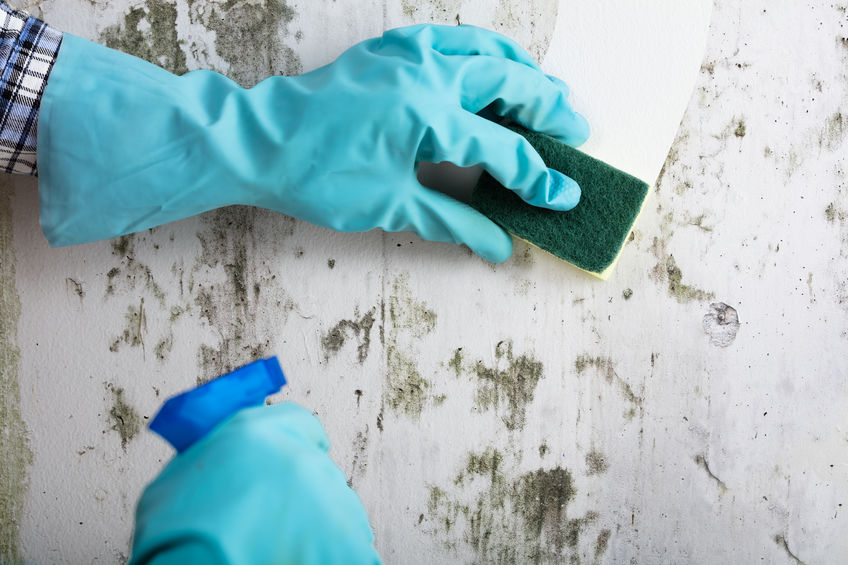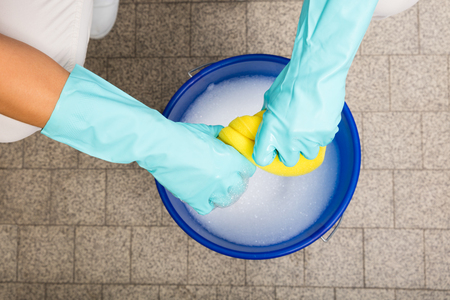- Clean Home
- Bathroom Cleaning and Organizing
- Bathroom Mold Removal Tips
Bathroom Mold Removal Tips
Bathroom mold removal tips for those unsightly stains and growths in this utilitarian room.
Dealing with mold and mildew is a common yet highly undesirable chore in most homes. We all know the feeling when faced with the ominous-looking black mold between tiles on caulk or around fixtures: It's tempting to cut and run.
I'd cut and run with you if that could solve the mold growth. Alas, once we returned, we'd likely find that this living menace to clean society had taken over the bathroom.
Instead of feeling overwhelmed and heading for the door, let's take immediate action. We can regain control of our bathroom by dealing with these nasty interlopers and sending them packing so we can stay put.
These bathroom mold removal tips can help.
1. Open a Window
Start by opening the bathroom window (if you have one) to allow mold spores to escape quickly. If you don't, grab a fan and position it to blow clean air from other rooms inside.
You'll be using a bleach-based cleaning solution, and for safety's sake, it's essential to keep the chemical fumes in this small room to a minimum.
No window? A portable fan aimed to blow fumes out of the bathroom will work in a pinch.
2. Bathroom Mold Removal Tips Cleaning Solution
Put on your cleaning gloves and mix a bathroom mold removal solution of 3/4 cup (180ml) of bleach in 1 gallon (4L) of water in a cleaning bucket. Swirl gently with your gloved hand to mix, ensuring no solution splashes onto nearby surfaces.
While bleach is essential to remove mold and mold spores, it also removes color from carpeting and bath mats—an undesirable side effect.
So, remove or cover stained items from your bathroom before you begin your mold and mildew cleaning routine. If you have carpeting outside your bathroom, plan your post-mold clean-up so the cleaning solution doesn't drip on your way out.
3. Fill a Second Bucket with Clean Water for Rinsing
The second bucket will hold the water you use to rinse away the mold-cleaning solution from surfaces.
4. Apply Bathroom Mold Removal Solution
Using a bathroom scrub sponge5. Let Solution Sit for 15 Minutes
To thoroughly remove mold, let the solution sit on surfaces with mold or mildew for at least 15 minutes.
6. Rinse Treated Surface
Rinse the bleach solution entirely from the tile or grout surface using the second bucket of clean water.
7. Dry Cleaned Surface
Dry the cleaned areas in your bathroom completely. Surface moisture encourages mold and mildew growth. You can use old rags and paper towels, use that fan aimed at the surface, or blow dry.
8. Repeat as Needed
Repeat the surface cleaning routine above if you can still see or smell mildew after cleaning.
Bathroom Mold Removal Tips for Preventing Future Mold and Mildew
Once the mold spores have been removed, consider using mold growth-inhibiting solutions, such as vinegar, to regularly clean bathroom surfaces, especially walls and bathroom tiles. Keep bathroom humidity below 55 percent.
Don't become numbers-bound here; turning on the bathroom fan for 15 minutes after your shower or bath will significantly lower the bathroom humidity.
- Clean Home
- Bathroom Cleaning and Organizing
- Bathroom Mold Removal Tips













